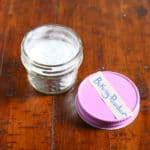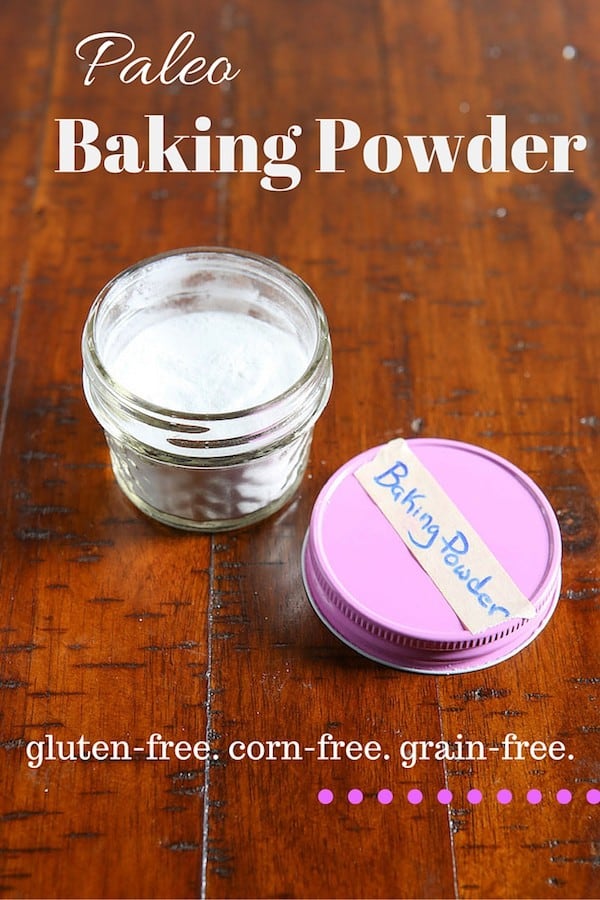Did you know that most commercial baking powder contains cornstarch? Thankfully, it’s easy to make your own!
Paleo Baking Powder: The Basics
It’s easy to make paleo baking powder! Simply combine two parts cream of tartar with one part baking soda. However, that combination is prone to clumping. So I like to add a little tapioca starch to the mix. That said, when it’s really humid out, the mixture still might clump. If you find that your paleo baking powder has clumped, either stir it with a fork or run it through a sieve to break up the clumps.
Paleo Baking Powder vs. Commercial Baking Powder: Double Acting vs. Single Acting
Pick up a can most baking powders and you’ll notice the words, “double acting.” Sounds a little like a high school drama club, doesn’t it?
Double acting baking powder contains two types of acids: one that reacts to liquid and one that reacts to heat. This means that commercial baking powder releases some bubbles (carbon dioxide, actually) when you add liquid to the batter. It can be any liquid, water, dairy-free milk, eggs, etc. Then when you slide the pan into the oven and the batter gets warm, it releases more bubbles.
For the baker, double acting baking powder behaves like an insurance policy. If you leave the batter on your counter for too long, you get a second chance when it goes into the oven.
Homemade baking powder isn’t double acting. It only reacts in the bowl. If you leave your bowl of batter sitting around for too long, those bubbles can pop and leave you with a flat finished baked good. No one wants that! The insurance policy for using homemade (single acting) baking powder is a simple one: don’t forget to preheat your oven.
That’s it.
With a preheated oven, you mix your batter, pop it into the pan, and bake. The bubbles in your batter won’t have a chance to pop and break. This isn’t something to stress about. You just want to be aware that your cakes and muffins and other goodies won’t rise in the oven.
Paleo Baking Powder: Mixing It Up
To make the baking powder, combine the cream of tartar, baking soda, and tapioca starch in a small bowl. Whisk everything together. If you want, you can sift everything together. (I have to admit, I usually don’t sift!) Unless you are baking a lot, I recommend making about a 1/3 cup of baking powder, no more. Since homemade baking powder is prone to clumping, I prefer making several small batches than making one large batch only to have it get clumpy as it ages.
Store the baking powder in a sealed container in your pantry.

Paleo Baking Powder
Ingredients
- 1/4 cup cream of tartar
- 2 tablespoons baking soda
- 1 teaspoon tapioca starch this keeps the baking powder from clumping.
Instructions
-
Whisk together cream of tartar, baking soda, and tapioca starch in a small bowl. Store in an airtight container.




Jan says
Thanks for this valuable info and specific details in explaining the science behind it. Good opportunity to know how baking powder actually works, so thanks. On another tangent, I am knew to Paleo and need to know how to make a substitute for baking soda. Is there a Paleo version for this? Also, what would be a safe baking powder, to baking soda to dry ingredient ratio in general baking? I am sure your experience can effectively guide me.
Elizabeth says
Baking soda isn’t grain-based and there isn’t a substitution for it. Hope this helps!
As for a standard ratio for baking powder to dry ingredients, there isn’t one. It really does vary by recipe.